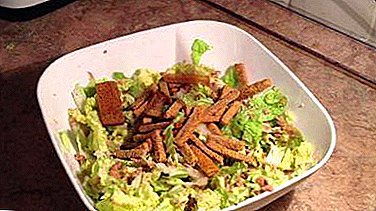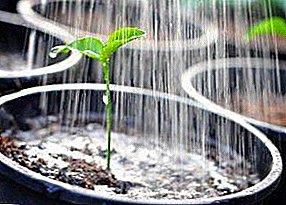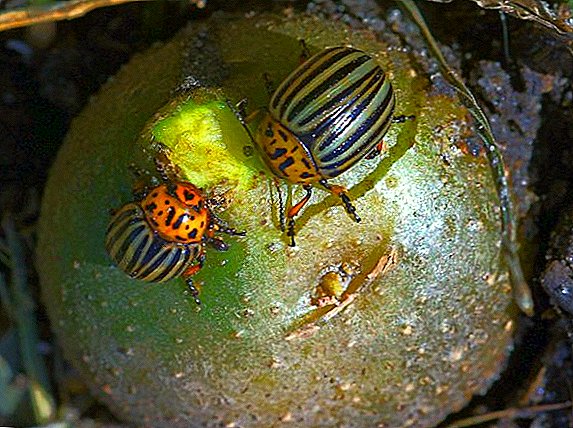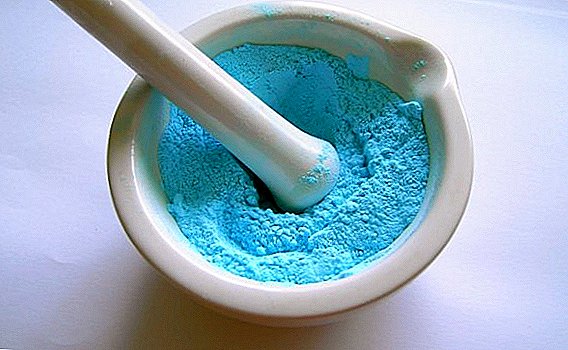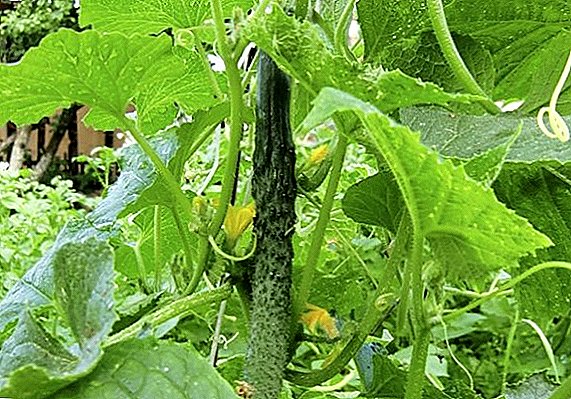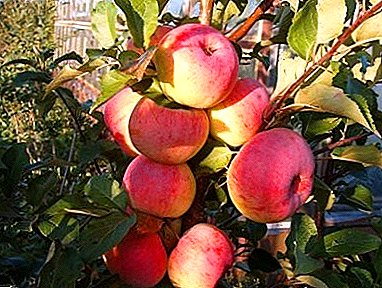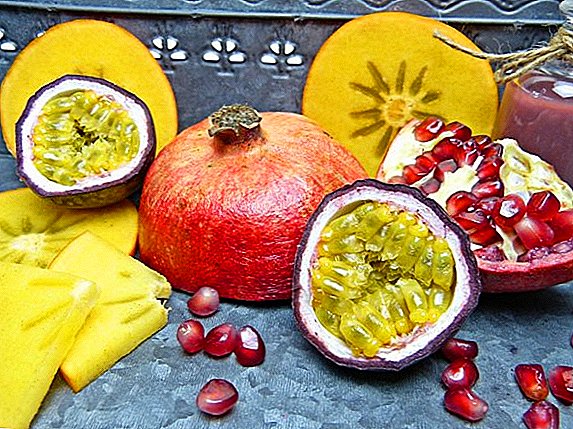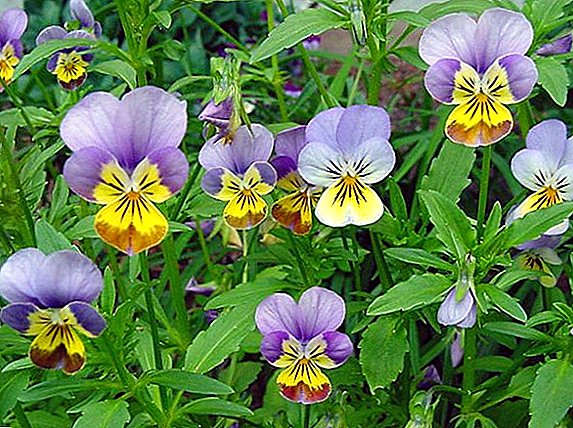 Viola (pansies) - one of the most common plants in flower beds and rabatkah, beloved by many gardeners. It belongs to the violet family. Also used for decor loggias, balconies, arbors.
Viola (pansies) - one of the most common plants in flower beds and rabatkah, beloved by many gardeners. It belongs to the violet family. Also used for decor loggias, balconies, arbors.
Did you know? The ancient Greeks and Romans decorated the room with viola during holidays and during dinner parties.
However, in order to enjoy the lush flowering, it is necessary to provide the plant with proper care, as well as be able to withstand the diseases and pests of the viola.
The main mistakes in the care of the flower
Wrong watering
 The most pernicious for the plant will be a long drying. Therefore, the viola should be watered, without waiting until the ground is completely dry and hardens. But from excessive watering the flower may wither, as the roots begin to rot. This means that a moderately moist, fertile soil will be the best option. In this case, the plant will bloom as long as possible, without causing much trouble.
The most pernicious for the plant will be a long drying. Therefore, the viola should be watered, without waiting until the ground is completely dry and hardens. But from excessive watering the flower may wither, as the roots begin to rot. This means that a moderately moist, fertile soil will be the best option. In this case, the plant will bloom as long as possible, without causing much trouble.
Non-compliance with lighting rules
Not the best option for viola will be open sun areas, as from the midday direct rays the flowers are likely to fade. And on the contrary - in a too darkened place, the viola crushes. The most suitable options for this plant will be half-shade, created by shrubs, saplings, wooden fences. At the same time, the morning and evening direct sunlight with a viol is well tolerated.
Fertilizer errors
 Pansies need regular feeding with potash and nitrogen fertilizers, at least twice a season. Moreover, experts advise the first feeding in the spring before the appearance of the buds, the second - at the beginning of flowering. Superphosphate, ammonium nitrate contribute at the rate of 20 g per 1 sq. M of soil. In the absence of top dressing with mineral fertilizers or its insufficient amount, the flowers become small, or the viola does not bloom at all.
Pansies need regular feeding with potash and nitrogen fertilizers, at least twice a season. Moreover, experts advise the first feeding in the spring before the appearance of the buds, the second - at the beginning of flowering. Superphosphate, ammonium nitrate contribute at the rate of 20 g per 1 sq. M of soil. In the absence of top dressing with mineral fertilizers or its insufficient amount, the flowers become small, or the viola does not bloom at all.
Important! It is not recommended to use organic fertilizers, especially manure.
Major Illness of Pansies
How to cure the viola from ascohyte
The main symptom of ascochitis (fungal infection) of the viola is the appearance of brown spots on the leaves, which have a wide brown border. These spots lighten with time, and the fruit body of the fungus develops on them. Diseased leaves dry quickly, and disease-causing spores remain in plant residues.
To combat this disease, the viola must be sprayed with copper-containing preparations before the beginning of the flowering period, and in autumn it is necessary to carefully remove all plant residues from the flower bed.
Mealy dew on viola
 White powdery plaque on the leaves of viola says the development of powdery mildew. Over time, it darkens and turns into black sclerotia. Infection persists in fallen leaves and flowers.
White powdery plaque on the leaves of viola says the development of powdery mildew. Over time, it darkens and turns into black sclerotia. Infection persists in fallen leaves and flowers.
For the prevention and treatment of the disease, before the start of flowering, flowers are sprayed with garden sulfur, colloidal sulfur, as well as with specialized preparations - Ordan, Skor, Horus and others according to the instructions. Just as in the case of ascohitoz, harvesting plant residues is required.
Causes of gray mold and their elimination
Pansies rot in high humidity, and when it rains heavily in the second half of summer, growers wonder what to do with this problem. A grayish bloom forms on the plant, and it itself becomes soft and watery to the touch.
Experts advise to use water solutions of "Trichoderdim", "Gliocadin" before flowering.
 When signs of gray mold are detected, diseased plants are thrown away along with the remnants of the earth, and the soil under those nearby is poured abundantly with the preparations "Alirin-B" and "Maxim". In the fall, it is imperative to remove the remnants of the viola so that the disease does not progress.
When signs of gray mold are detected, diseased plants are thrown away along with the remnants of the earth, and the soil under those nearby is poured abundantly with the preparations "Alirin-B" and "Maxim". In the fall, it is imperative to remove the remnants of the viola so that the disease does not progress.
How to get rid of brown spots on the leaves, treatment of septoria
If reddish-brown spots of small diameter (5-10 mm) appear on the viola, which gradually dry and crack, you can be diagnosed with septoriosis.
In order to prevent this disease, the flowers are sprayed with Bordeaux mixture or its substitute - copper oxychloride. As in all previous cases, plant residues should be removed from the site.
Phyllosthiasis Pansies
The main symptom of the disease is the appearance of large ocher-brownish spots with a lighter middle. Over time, sclerotia can be seen on both sides of the leaf. The affected plants dry quickly. As with all viral fungus diseases, it requires an autumn stripping of the area.
Important! The best prevention of all diseases of pansies will be the destruction of diseased plants and the thorough cleaning of the place where they were planted.
How to deal with flower pests
Pearlescent
 In summer, the mother-of-pearl caterpillars, the nymphalidae, attack the viola. It is possible to recognize pests by a characteristic white band on a black back (mother-of-pearl) or a large yellowish strip on the back and brown dash on the sides (large forest mother-of-pearl). Insects actively eat leaves and flowers.
In summer, the mother-of-pearl caterpillars, the nymphalidae, attack the viola. It is possible to recognize pests by a characteristic white band on a black back (mother-of-pearl) or a large yellowish strip on the back and brown dash on the sides (large forest mother-of-pearl). Insects actively eat leaves and flowers.
At the first signs of the presence of a pest, the pansies should be treated with appropriate insecticidal preparations, for example, Iskra-Bio, Tsitkor, Kinmiks and others.
Gallic nematode
This pest infects the root system of the viola, as a result of which galls are formed on the roots - swellings of 5–7 mm in size. It is in them that the larvae grow, which then come to the surface of the soil and eat flowers.
As a preventive measure, it is recommended to preplant the steaming of the earth with water heated to 50-55 ° C. A week before sowing, it is possible to add nitric acid sodium at the rate of 150-120 g per 1 square meter.
Spider mite
 In dry times, the spider mite can be the cause of the death of pansies. He dehydrates a weakened plant, and soon the edges of the leaves turn yellow and curl into a tube.
In dry times, the spider mite can be the cause of the death of pansies. He dehydrates a weakened plant, and soon the edges of the leaves turn yellow and curl into a tube.
To help cope with this problem will help specialized drugs against ticks, including garden sulfur, "Siren", "Fufanonnom", "Aktelik", "Talstar".
In general, the main recommendations of florist experts are reduced to the need to apply preventive measures against viola pests and diseases, and if it was not possible to avoid trouble, dispose of the affected specimens without regret.


